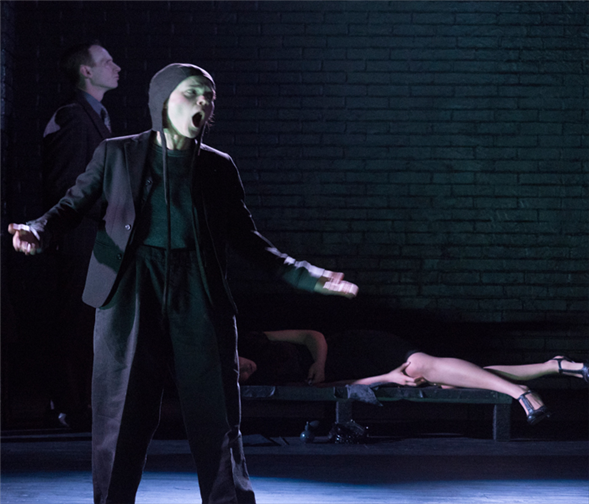Translate Page

Axis Company rejuvenates a classic play
---
You've probably seen pictures of a slum. But what would it feel like to live in one?
Director Randy Sharp raises this question in her revival of Sidney Kingsley's Dead End, a 1935 hit on Broadway that later became a Humphrey Bogart picture. Originally, Sharp says, the drama felt necessary because it educated audiences on poverty in New York City.
"There was no other way to see how the other half lived, because it was 1935," she explains. "They couldn't look at images of poor people on the internet. They couldn't watch CNN. The only way that they could learn about what was actually happening in the slums of New York was through what was then a breakthrough show like Dead End." (Sharp directs Axis Company's revival, which runs through May 20.)
The revelations of the original production included a vividly realistic set. "It was like a photograph of what those buildings actually looked like and what the slums actually looked like," says Sharp.
Consider the play's opening stage direction, which details a New York neighborhood for pages on end. Tenement houses stand, almost ready to crumble, on a street strewn with newspapers, writes Kingsley. Children have a dip in the nearby East River, unashamed to swim through the refuse and offal floating on its surface. And plumb in the middle of all the wretched squalor—the swanky East River Terrace Apartments, home to the filthy rich.
But how do you recreate that impact in 2017? After all, we have the internet. We watch CNN. We have easy access to images of poverty.
"We're not going to show you a fake apartment building," Sharp says. "We're going show you what it feels like to stand next to a fancy apartment building if you live in a slum."
Her production's stripped-down set has only one piece of scenery: some wooden dock pilings suggestive of the East River wharves. She relies on lighting to create the show's various locations.
As a result, the characters become more salient. Sharp wants her audience to regard them as real people, not as black-and-white clichés they've seen on Turner Classic Movies. Herein lies the opportunity to educate.
"You may not know everything about the hooker with a heart of gold," she says, referring to Francey, a character in the play. "Let's go into that and really discover the bleakness, the sadness, the desperation."
Sharp has staged the domestic lives of characters so, as she says, "you can see into their hearts."
All fourteen characters remain onstage for the entire performance, and in scenes where they have no dialogue, they retreat to spaces representing their homes. There, for instance, Francey might doll herself up before going on a date, which reminds us that she has rituals and routines like anyone else.
"We tried to bring it back to reality," says Sharp. "We tried to strip away the easy part where you could dismiss the characters as old-fashioned."
---
<emTDF Members: At press time, discount tickets were available for 'Dead End.' Go here to browse our current offers.</em
Gavin Whitehead is a dramaturg and writer living in New Haven.
Photos by Pavel Antonov. Top photo: A scene from 'Dead End'.